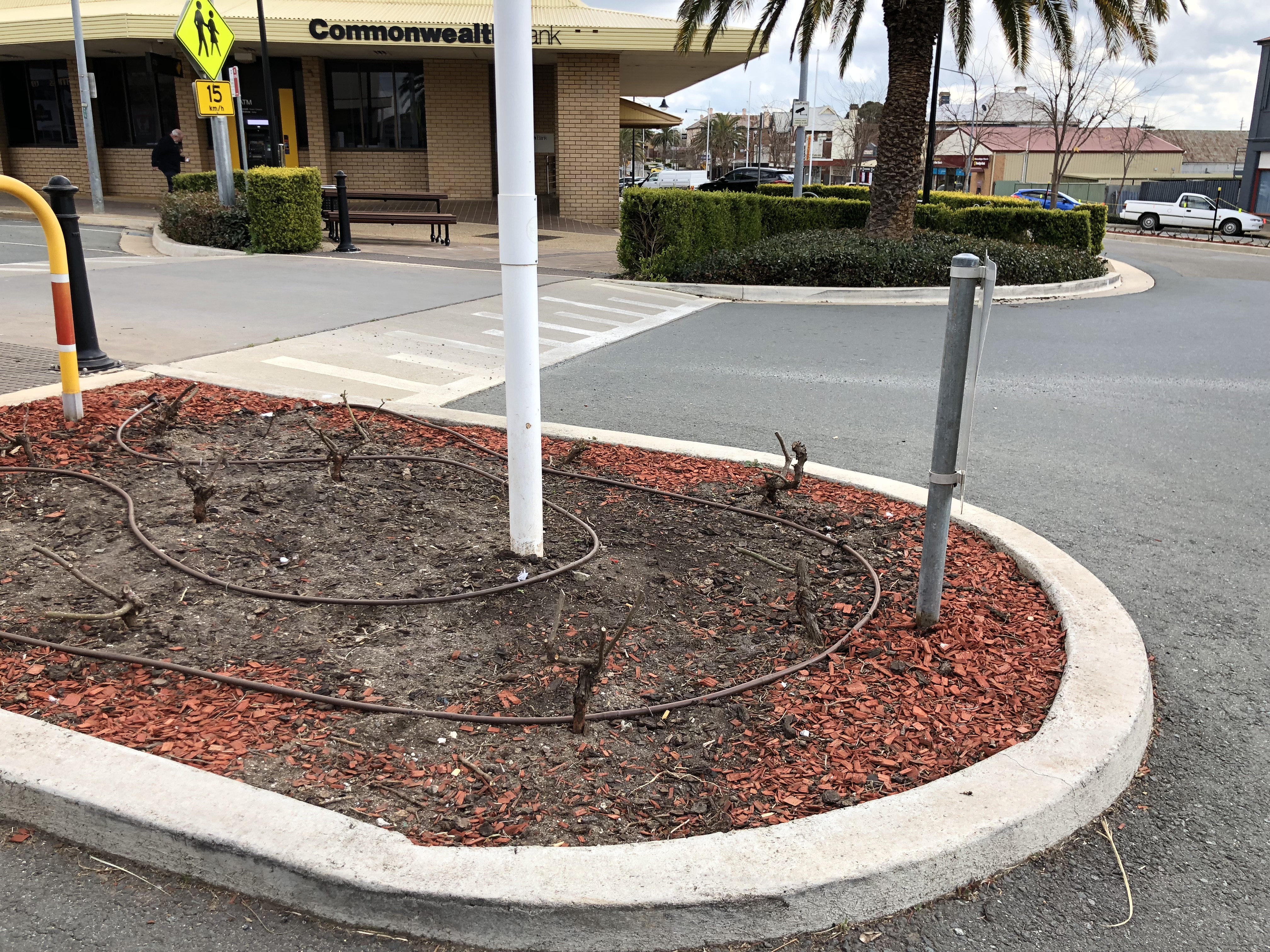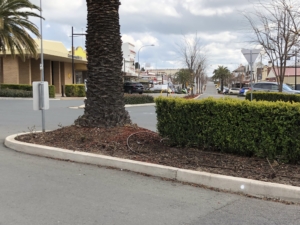The intersection of Station and Neill Street where roses have been pruned. Other parts of the main street have seen numerous tree deaths and the removal of seaside daisies.
The ‘upgrade’ of Neill Street which occurred under the former Harden Shire Council will present itself before Councillors for the August Business Meeting. The area has seen significant losses to the main trees which line the median strip and the parking bays. The seaside daisies have all been removed with excuses made by Council as to their original permanency.
According to Council, staff turnover and inability to follow the ‘true following of the manual’ have resulted in the issues.
The paper states, “The former Harden Shire Council, over a 2-year period prior to amalgamation, constructed the Harden CBD landscaping at a cost in the order of $3,000,000. At the time of construction a landscape maintenance manual was produced for the maintenance requirements. Recent turnover in ground staff and issues with operation of irrigation has challenged true following of the manual and with that maintenance issues of the central island trees appeared.”
The following recommendation has been made
That Council: (a) Continue to maintain the landscaping in accordance with the Neill Street Landscaping Maintenance Manual; (b) Retain the current Robinia P. species as the tree planting and conduct regular reduction pruning to reduce failure potential; (c) Recognise in future budgets that this will require additional financial resources over the next 5 years, but it will maintain the aesthetic intent, tree shape and profile; and (d) Remove the trees from the median islands due to the difficult growing conditions and the road safety issues identified.
According to Council’s report, “This will mean that during the spring growing season the roses should regrow to produce the desired landscape effects. It is also noted that the seaside daisy has been removed as this was only a temporary solution while the roses established.”
Council went on to acknowledge issues with the larger trees in the area. The report stated referenced the “Robinia Pseudoacacia “Frisia” Trees. and stated “There have been a number of failures of these trees relating to poor maintenance practices and poor locations for the trees.”
The report goes on to state, “In relation to the trees that exist there are 3 major issues.
a) Poor Location of the trees. The trees that have been planted in the median island will continue to suffer as root growth is severely constrained in the lateral direction. By the nature of the beds they are a long narrow pot which does not allow lateral growth of the roots. This means they will always be relatively unstable and have poor growth qualities.
b) Previous poor pruning practices. While well intentioned it would appear that previous staff where not adequately trained in this area. The current staff have been instructed on more appropriate methods and will commence appropriate pruning in November in consultation with an appropriately trained arborist, as recommended.
c) Additionally, it is not good practice from a road safety viewpoint to plant trees with low branches on intersections or in median islands. This is because drivers’ sight lines are restricted. Further, tree maintenance is a WH&S issue unless the entire road section is closed while work is undertaken. The Wade Ryan report indicates that it is not good practice with Robinia P. to undertake uplifting of the lower branches. This creates further driver and pedestrian sight line issues.”
The 2019-20 budget allocation for Neill St is $80,000. Should Council resolve to keep the Robinia P. as the street tree then an additional $15,000 for pruning will be required over the period.
With the Robina P proving to be unsuitable the question must be asked as to why they would be kept at all?


